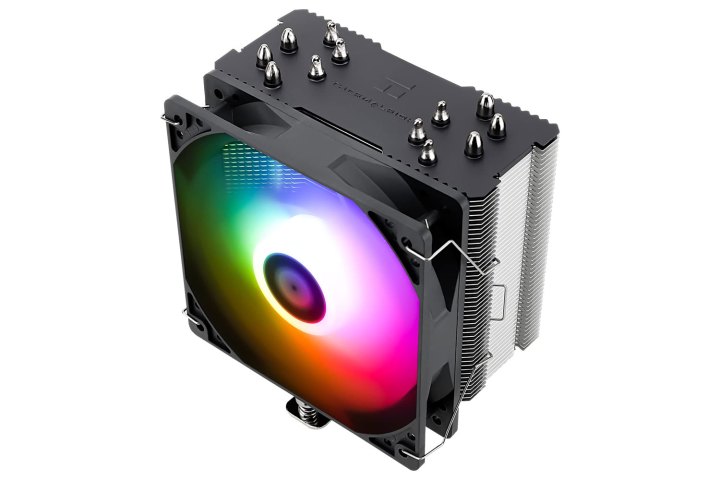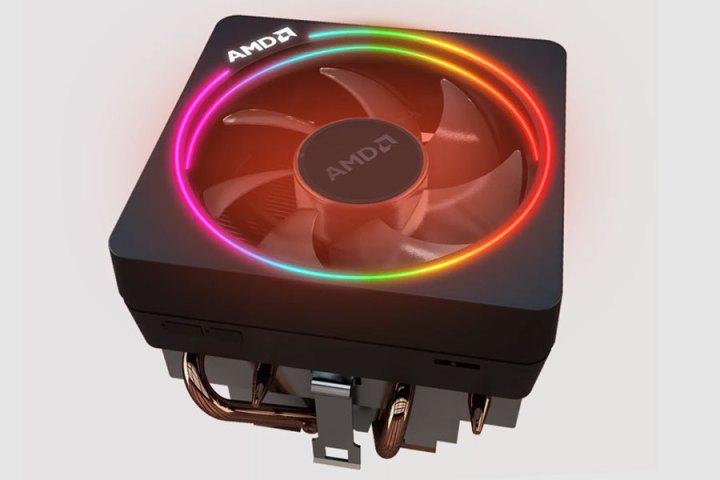
The AMD Ryzen 7 7800X3D is the best CPU for gaming, and it’s incredibly efficient, which means for most PC users who aren’t looking to transcode video or create 3D renders, it’s the best CPU overall. As efficient as it is, though, you do still need to cool it, and if you want it to run cool and quiet, you need a relatively capable one. But which is best?
You could just buy the best air cooler or AIO cooler available, and that will work absolutely fine. Really well, in fact. But you don’t need to. Thanks to its relatively modest TDP, the 7800X3D doesn’t actually need a monster cooler to run quietly and run well. You can save a lot of money by going with something more modest.
A single tower is all you really need

The 7800X3D might be a fast gaming chip, but its TDP is only 120W, and it doesn’t even get close to that in gaming. As TechPowerUp shows, even in some of the most demanding applications, it typically pulls less than 80W, and in gaming, quite often doesn’t even demand 50W! That’s low enough that you really don’t need to opt for the high-end coolers from the likes of Noctua and be quiet!, which are just overkill for a CPU that’s this efficient and very expensive.
You are better off buying an affordable but well-made single-tower cooler like the Thermalright Burst Assassin or the Deepcool AK400, both of which can be had for less than $40. Their larger versions, the Peerless Assassin and AK500 are great alternatives, but they’re bigger, heavier, and largely unnecessary for a chip like the 7800x3D. The same goes for Noctua coolers and their contemporaries.
Single towers are perfectly capable of keeping the 7800X3D cool and doing so quietly, but because they’re a single tower, they are much easier to use and install. You are less likely to have clearance issues with motherboard or memory heatsinks, they’re lighter, so won’t put as much pressure on your motherboard, and they’re easier to fit into smaller cases.
An AIO is a space-saving option

All-in-one water-coolers, otherwise known as AIOs, aren’t the best solution for CPU cooling that they once were. With the advent of newer, bigger, more efficient air coolers, AIOs are more about lower noise levels and space saving in the main body of your case today. AIOs typically offer greater cooling performance than you need for the 7800X3D, and they are all more expensive than our affordable air cooler suggestions. However, if you really want an AIO because you like its look, want to save some space, or just want to use water without the hassle of a custom loop, then AIOs are great for cooling the 7800X3D, too.
If you’re going to buy an AIO for this chip, don’t spend the earth. A powerful 120mm AIO like the Cooler Master MasterLiquid 120L is plenty for a 7800X3D. If you want to go for a 240mm option, then the Cooler Master MasterLiquid 240L is a good option, but there are a few sub-$100 AIO coolers worth considering.
They will cool your CPU better than the cheap air models we recommended, but that won’t do much of anything for performance. It will all but guarantee near-silent operation, but is that worth paying two to three times the price? That’s up to you.
A cheeky budget option

Have you considered the AMD Wraith Prism cooler? The 7800X3D might not ship with one, but AMD’s Zen 3 and Zen 4 stock cooler is perfectly capable of cooling the 7800X3D, as Buildzoid proved. You can buy one of these on Ebay for $10, throw it on your 7800X3D, and your performance and temperatures will be within a percent or two of much more powerful coolers.
Sure, noise levels will be higher with a smaller cooler like this than the larger tower and AIO models recommended above, but if you are tight on budget and don’t mind gaming in headphones, the Wraith Prism is more than enough to keep your 7800X3D running well. It’s also pretty low profile, so it’s a good fit for small form-factor PCs, too.
The world’s your oyster
When we say the Ryzen 7800X3D is the best gaming processor in the world, we mean it. It’s not the fastest chip in the world in every scenario — the 7950X3D and 14900K are very competitive with it and easily outperform it in non-gaming tasks. But it goes toe to toe with these powerhouse processors at a fraction of the price and with a much more efficient design.
It’s hard to express just how impressive the 7800X3D is. The 14900K uses between 150W and 200W in most games and over 250W in some productivity applications. The 7800X3D, on the other hand, barely uses 50W for the same performance in gaming. That’s what makes it so special, and that’s what makes it so easy to cool. This gives you a wide range of options, from single towers to AIOs to cheeky AMD stock coolers and everything in between.




